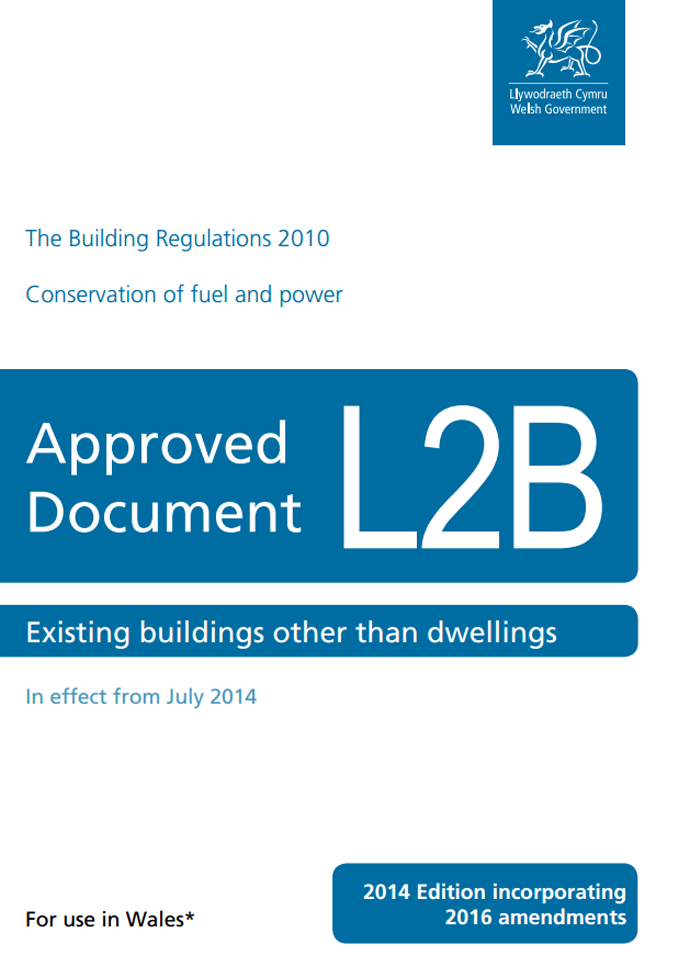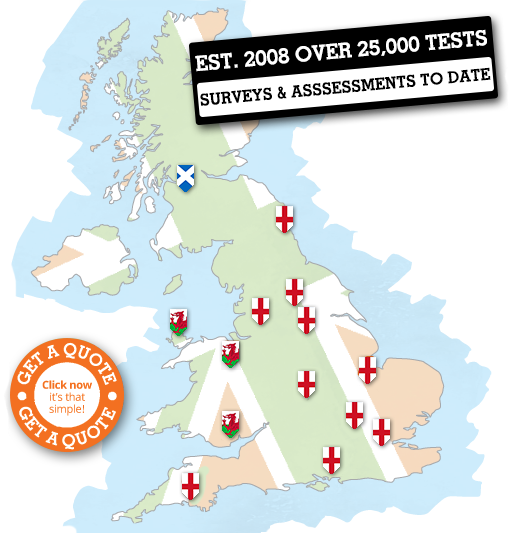Offices Nationwide

Air Testing
As part of thermographic surveys we can also use an air Pressure testing kit to depressurise the building and help detect any air leakage within the property..more

Sound Insulation
Two parameters describe sound insulation; Dw and Rw. Dw is the insulation between rooms. Rw is the lab-tested insulation of a wall/floor...more
Part L2B
Conservation of fuel and power

Asbestos_Survey is sometimes referred to as Fire Risk Assessment, Fire Safety, Fire Risk Assessment, Fire Risk Assessment, Fire Risk Assessment.
Asbestos Surveys Across the UK
What Is Asbestos?
Asbestos is a set of six naturally occurring silicate minerals mined from rocks and used commercially for their desirable physical properties. The trade and use of asbestos has been restricted or banned in many jurisdictions in the UK.
There are 6 types of asbestos - but only 3 have been widely used in building materials: white (Chrysotile), brown (Amosite) and blue (Crocidolite). Strictly speaking blue is the most dangerous, followed by brown and then white.
Where Can Asbestos Be Found?
- Toilet cisterns can contain asbestos-reinforced resin materials
- Insulation in floor and wall cavities, lofts and insulating boards
- Artex or similar decorative / textures coating on ceilings and sometimes walls
- External / internal wall panelling particularly around windows
- Water tanks can be made from asbestos cement and is often found in pre-1980 houses
- Flash Guards on fuse wires and panelling behind fuse boxes
- Sprayed fire insulation
- Floor tiles, mastics and sealants
- Pipe works, boilers, ducts and heat exchanges
What's Involved In An Asbestos Survey?
An asbestos management, or type 2, survey will have one of surveyors taken samples of suspected asbestos throughout a building before sending them off to a lab. Whilst at the property, each room and the materials used will be noted. If a room is locked or otherwise inaccessible this will be noted too as there will remain a possibility of asbestos within.
For a refurbishment/demolition, or type 3, survey, a more destruction method is used over a management survey, as the name suggests. One of our asbestos surveyors will use means such as drilling floor slabs or knocking through walls to access areas where planned work will be undertaken. This ensures that when the building is converted of knocked down that the next team in won't risk running into any asbestos that could be hazardous to their health and slow the project.
Asbestos Legislation
Under the Control of Asbestos Regulations 2012, it's the duty of the site owner of a commercial premise to identify and manage asbestos in and around the property.
Employers must undertake risk assessments before commencing work which exposes, or is liable to expose, employees to asbestos. This risk assessment must include:
- A plan of work detailing how the work is to be carried out
- Indication of any asbestos-related issues
- Provide solutions to these issues
- How to prevent exposure to asbestos or reduce it to as low a level as is reasonably practicable
Surveyor Qualifications
Each member of our asbestos team are holders of the BOHS (British Occupational Hygiene Society) P402 qualification - the statutory proficiency certificate in 'Building Surveys and Bulk Sampling for Asbestos'. Our experienced and professional consultants are here to help so if you have any queries please call us on 0800 043 8100 or send your query to Asbestos-Survey@e2consultants.co.uk.
Our experienced asbestos team that covers the UK are qualified asbestos management, refurbishment and demolition surveyors for industrial, commercial and domestic buildings. We can also undertake a Commercial EPC at the same time to provide you with a cost-effective package deal where needed.
Our other services include:
Warning: Invalid argument supplied for foreach() in /data04/elite/public_html/Office.php on line 769
Commercial Asbestos Management Surveys can also be known as:
Asbestos Management Survey, Commercial Asbestos Refurbishment Survey, P402 Asbestos Survey, Commercial P402R Asbestos Survey, Asbestos Survey, Asbestos Refurbishment Survey, P402R Asbestos Survey, Commercial Asbestos Management Survey, Commercial Asbestos Survey, Asbestos Demolition Survey, Commercial P402 Asbestos Survey, Commercial Asbestos Demolition Surveys,
Copyright 2025 E2 Specialist Consultants Limited
Company No. 06728970
In Area F
Fire Risk Assessment in Failsworth, Fire Risk Assessment in Fair Oak, Fire Risk Assessment in Fairfield, Fire Risk Assessment in Fairford, Fire Risk Assessment in Fairlands, Fire Risk Assessment in Fakenham, Fire Risk Assessment in Falkirk, Fire Risk Assessment in Falkland, Fire Risk Assessment in Falmouth, Fire Risk Assessment in Fardon, Fire Risk Assessment in Fareham, Fire Risk Assessment in Faringdon, Fire Risk Assessment in Farnborough, Fire Risk Assessment in Farnham, Fire Risk Assessment in Farnworth, Fire Risk Assessment in Farrington Gurney, Fire Risk Assessment in Fauldhouse, Fire Risk Assessment in Faversham, Fire Risk Assessment in Fazakerly, Fire Risk Assessment in Fazeley, Fire Risk Assessment in Featherstone, Fire Risk Assessment in Felixstowe, Fire Risk Assessment in Felsted, Fire Risk Assessment in Feltham, Fire Risk Assessment in Ferndale, Fire Risk Assessment in Ferndown, Fire Risk Assessment in Fernhurst, Fire Risk Assessment in Ferry Hill, Fire Risk Assessment in Fifield, Fire Risk Assessment in Filey, Fire Risk Assessment in Filwood, Fire Risk Assessment in Finchampstead, Fire Risk Assessment in Finchley, Fire Risk Assessment in Findon, Fire Risk Assessment in Fintona, Fire Risk Assessment in Fishguard, Fire Risk Assessment in Fivemiletown, Fire Risk Assessment in Fladbury, Fire Risk Assessment in Fleckney, Fire Risk Assessment in Fleet, Fire Risk Assessment in Fleetwood, Fire Risk Assessment in Flint, Fire Risk Assessment in Flintham, Fire Risk Assessment in Flitwick, Fire Risk Assessment in Fole, Fire Risk Assessment in Folkestone, Fire Risk Assessment in Fordham, Fire Risk Assessment in Fordingbridge, Fire Risk Assessment in Forest Gate, Fire Risk Assessment in Forest Green, Fire Risk Assessment in Forest Hill, Fire Risk Assessment in Forest Row, Fire Risk Assessment in Forfar, Fire Risk Assessment in Formby, Fire Risk Assessment in Forres, Fire Risk Assessment in Fort William, Fire Risk Assessment in Fortrose, Fire Risk Assessment in Fotheringhay, Fire Risk Assessment in Fowey, Fire Risk Assessment in Foxham, Fire Risk Assessment in Framlingham, Fire Risk Assessment in Fraserburgh, Fire Risk Assessment in Freshwater, Fire Risk Assessment in Frimley, Fire Risk Assessment in Frinton-on-Sea, Fire Risk Assessment in Frodsham, Fire Risk Assessment in Froghall, Fire Risk Assessment in Frogmore, Fire Risk Assessment in Frome, Fire Risk Assessment in Fulbourne, Fire Risk Assessment in Fulham,






































